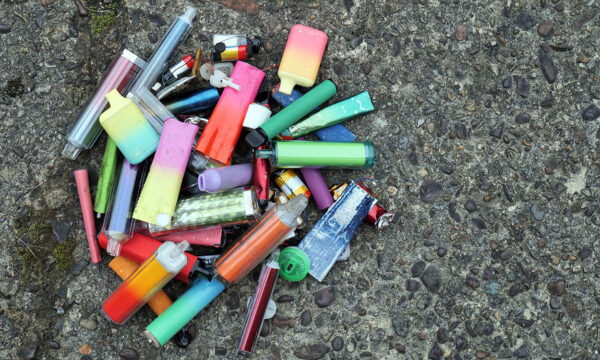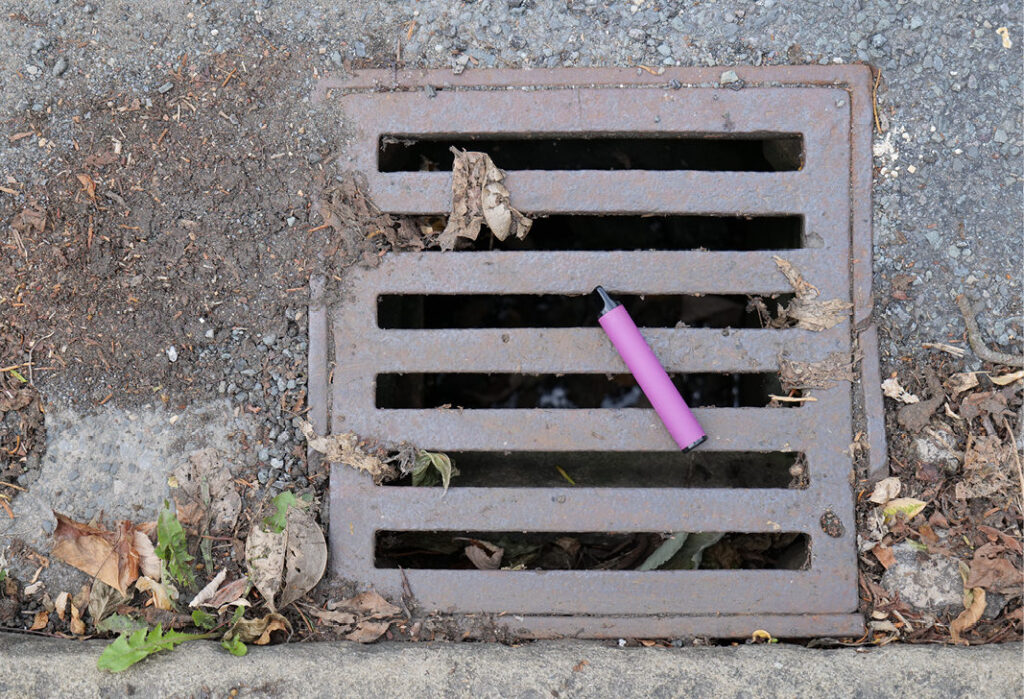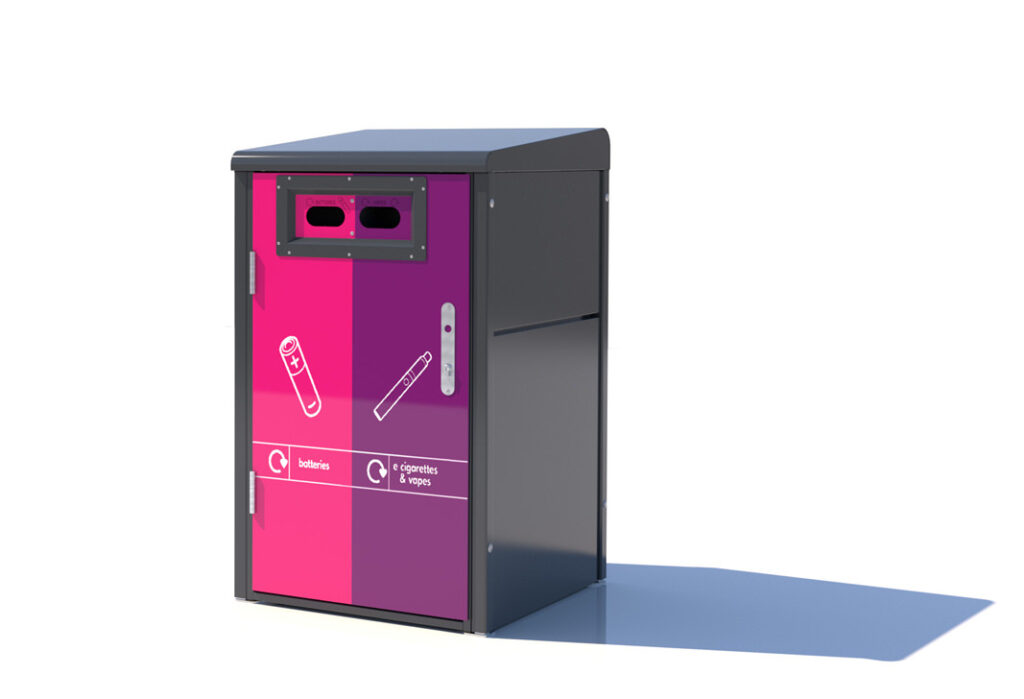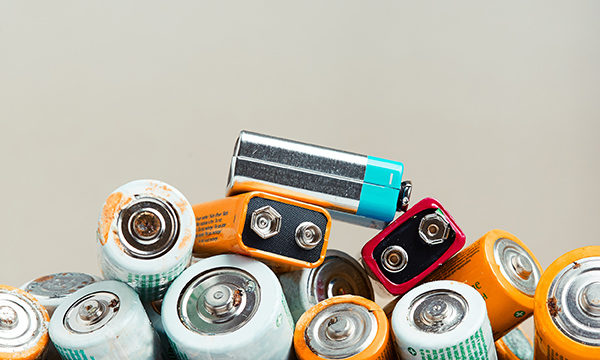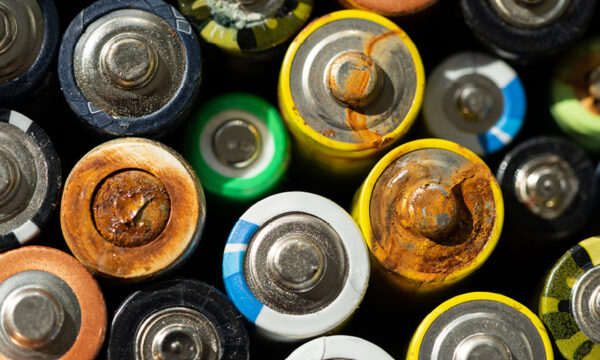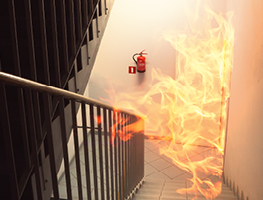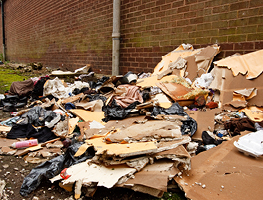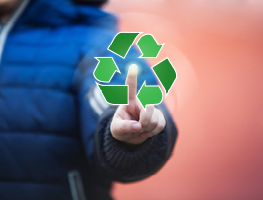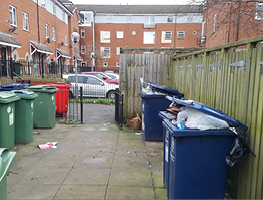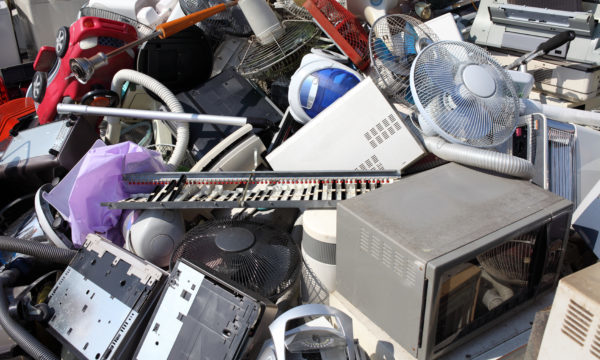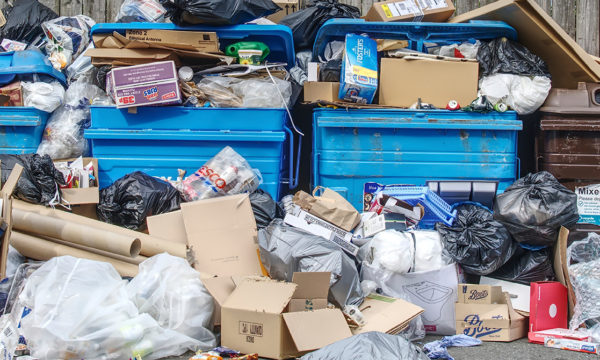Table of Contents
In June 2025, a UK Government ban came in to place, making it illegal to sell single-use or ‘disposable’ vapes. The aim of the legislation was to reduce the environmental impact, fire risk and health implications of the throwaway devices.
In the years since single-use vapes first appeared, almost overnight, on our UK high streets, a mass of associated litter has become an all too familiar blight. The discarded devices themselves, their packaging and stickers now plague our streets, increase fire incidents and contaminate the environment around us.
So, two months on, what’s the impact of the ban and what are the next steps in further improving environmental and health outcomes for the future?
Why the UK Banned Disposable Vapes
The Scale of Vape Waste in the UK
Prior to the ban, the scale of the waste linked to single-use vapes in the UK was shocking. Nearly 5 million disposable vapes were thrown away or littered every week in 2024; equivalent to 8 vapes every second.
DEFRA explain that whether littered or thrown in a bin and sent to landfill, discarded single-use vapes release substances like lead and mercury into our soil, rivers and streams, threatening ecosystems and habitats. What’s more, the plastic used in these vapes are near impossible for nature to biodegrade. One ‘disposable’ device which might promise 600 puffs, will likely still be here some 600 years later, thanks to its plastic casing.
If single-use vapes are sent for recycling, the process is extremely lengthy, with each device needing to be dissembled manually. This is described by DEFRA as, “a slow and tricky process which struggles to match the avalanche of vapes that are produced and discarded.”
Loss of Valuable Materials from Discarded Vapes
When vapes are dumped, the valuable resources within them, such as cobalt and copper are also wasted. A single-use vape contains 0.15g of lithium in the battery; a precious metal which is already facing global shortages. Within the 5 million vapes that were discarded per week in 2024, approximately 39 tonnes of lithium was also lost, or enough to power almost 5000 electric vehicles. Chemistry World add that, “beyond lithium, rarer elements including niobium, antimony and tungsten are also present in many of the disposable vapes, [wasted in] landfills.”
Wasting these elements inside each device, is irresponsible at many levels. The production of plastic, mining for materials, shipping and packaging becomes wasted too, for every single vape sold and not re-charged. These little, brightly coloured devices have truly become, “one of the defining images of our throwaway culture”, say Greenpeace.
Vape Disposal and Fire Risk
It is the elements inside each device, that add serious fire risk to this already problematic product. Lithium batteries are extremely flammable. In 2023 there were over 1,200 battery fires in bin lorries and waste sites across the UK, a 70% increase on the year before, coinciding with the steep increase in vape use, report DEFRA.
In July 2025, a serious fire in Exeter occurred in a refuse lorry, caused by an exploding vape battery. It is said that the fire, which caused extensive damage to the vehicle, became so hot that it melted the metal walls of the vehicle.
Similarly, in Slough, one refuse crew needed to temporarily dump about five tonnes of collected rubbish on to a road because of a serious fire in their lorry, thought to have been caused by a lithium-ion battery.
Fire Industry Association (FIA) note that the volatile nature of the lithium-ion batteries used in vapes, particularly when damaged or compacted in waste vehicles, makes them a real danger and highlights the ongoing risk posed to waste operatives, emergency responders and the public when they are not disposed of correctly.
Impact of the Ban
Initial Sales Drop
Early reports indicate a sharp decline in single-use vape sales in the week immediately after the ban. Vape Business, citing figures from over 13,000 UK stores including 1,600 forecourts, reported that sales fell by more than £5 million in that first week alone.
The drop was not uniform across the country. Scotland recorded the steepest fall in sales of single-use vapes at around 36%, followed by Northern Ireland at 31%, the north-east of England at 27% and Wales and Yorkshire at around 20% each.
The initial fall was taken as a hopeful sign of momentum towards better habits, environmentally and health wise but the picture is somewhat more complicated.
Rise of “Rechargeable” Disposables
While sales of the specific products named in the ban have declined, concerns are already being raised about the rapid emergence of near-identical alternatives.
A new wave of chargeable vapes, in the same brightly coloured and sweet-smelling flavours, are now available at exactly the same price point and size as the disposable version. These devices are technically rechargeable, or the old model with an added charging port, but many are being sold without clear guidance and with limited availability of compatible refills or pods. Therefore, customers are simply discarding the devices when empty, just as they did before the ban.
In this way, many of the key risks linked to single-use vapes have not gone away. There is little to no incentive for vape users to change their behaviours meaning and so the problems already outlined will persist. For this reason, better infrastructure is urgently needed to reduce the environmental and fire risks linked to discarded vape devices.
The Case for Safe Vape Disposal Infrastructure
If a product is still ending up in the wrong place at its end of life, then the best response to this goes beyond regulation and calls for effective infrastructure to drive behaviour change.
Without clear, safe routes for disposal, people will continue to do what is easiest and that might be discarding their empty vape device in a black bag, public litter bin, or elsewhere, littering their local environment.
Safe, accessible vape disposal points are urgently needed at scale. Deployed in public places, infrastructure should serve housing estates, school routes and transport hubs and must be fire-resistant, secure and easy to use.
metroSTOR has developed dedicated RCF Vape & Battery Units for exactly this purpose. Built to contain fire risk and designed for outdoor settings, these units allow housing providers, local authorities and businesses to provide a clear point of disposal. Combined with education and signage, they support a visible, practical approach to preventing further harm.
Vape Disposal as Part of a Circular Economy
The need for safe vape disposal is not limited to the immediate aftermath of the disposable vape ban. The same infrastructure is relevant for a wide range of e-waste and battery-powered products that pose fire and environmental hazards. By investing in solutions now, housing providers and local authorities can future-proof their approach and stay ahead of similar challenges.
Safe collection points also align closely with upcoming Waste Electrical and Electronic Equipment (WEEE) reforms and Extended Producer Responsibility requirements which are set to place greater emphasis on the correct handling of electrical waste. Providing a clear route for the public to recycle small batteries and electronic devices will help meet compliance obligations while reducing the burden on waste services.
Beyond regulatory compliance, effective vape and battery collection supports wider circular economy goals. Recovering valuable materials and preventing pollution preserves resources for reuse and reduces the environmental impact of consumer products.
Steps Housing Providers and Councils Can Take Now
Housing providers and councils have an opportunity to act now by reviewing their current provision for vape and battery disposal. A simple audit of available collection points, particularly in areas with high pedestrian use or dense housing, can reveal immediate gaps. metroSTOR’s RCF Vape & Battery Units provide a ready-to-deploy option that combines safety, durability and clear public messaging. Find out more, here.
